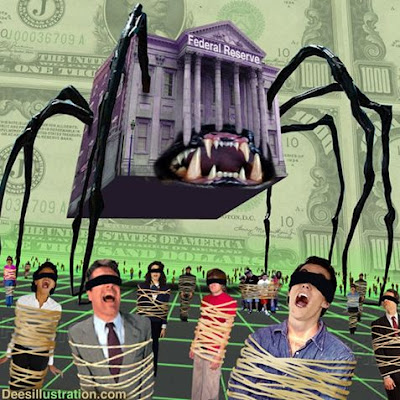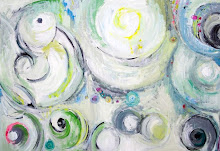
Given the trillions of dollars that the Federal Reserve has pumped into the economy to jumpstart consumer spending (indeed, Capitalism itself), many generations of Americans will be struggling financially as the United States goes from creditor nation to debtor nation practically overnight. Yet somehow US President Barack Obama still promises to create a long overdue national healthcare plan.
Much of the present financial stress began just after 9/11, some economists argue, when George W. Bush beseeched the American people to show defiance in the face of al Qaeda. Their recourse to action: ascend on the shopping malls in their Fords and Chevrolets en masse and shop! So the Federal Reserve, caught up in the euphoria, happily slashed interest rates and the banks, in cooperation with Wall Street, began to underwrite dangerously risky loans and subprime mortgages. Exactly how dangerous was revealed last year with the collapse of the US housing markets. The globe is still feeling the aftershocks, and some are predicting the arrival of yet another ‘big one’ before it’s all over.
Since the start of the ongoing economic crisis, which caused a tremendous loss of confidence in the US dollar, there have been calls to rebuild the world’s financial architecture.
“We must rethink the financial system from scratch, as at Bretton Woods,” said French President Nicolas Sarkozy in September.
In July 1944, with World War II drawing to a close, 730 representatives from over 40 nations assembled at the Mount Washington Hotel in Bretton Woods, New Hampshire, US. Here, the delegates agreed on financial legislation – including the creation of the International Monetary Fund and World Bank – that would dictate economic policy in the West for the next half a century.
At the center of the agreement was the decision to make the US dollar the ‘world’s reserve currency,’ which was based on the gold standard. This system collapsed on August 15, 1971 when US President Richard Nixon “closed the gold window.” In other words, the dollar is no longer backed up by gold reserves, and to this day the US currency enjoys “dollar hegemony.” But for how long is another question.
In October, Prime Minister Vladimir Putin rattled financial markets when he hinted to his Chinese counterpart, Wen Jiabao, that the two countries “stop using US dollars in Russian-Chinese settlements.”
China owns around $700 billion dollars of US debt in the form of Treasury Bonds, so it is understandable that the Chinese authorities are seriously considering what the heck to do with their investment at this point.
US officials estimate a deficit of $1.841 trillion for the 2009 budget.
Whatever US officials finally decide to do with the Federal Reserve, they may wish to reflect upon the British economist John Maynard Keynes’ suggestion for a world reserve currency.
Keynes suggested a ‘world currency unit,’ the bancor , which would regulate the international medium of exchange between nations. The famous supply-side economist envisioned the bancor being fixed upon the value of 30 commodities, with gold among them.
Now there's an idea worth banking on.


No comments:
Post a Comment